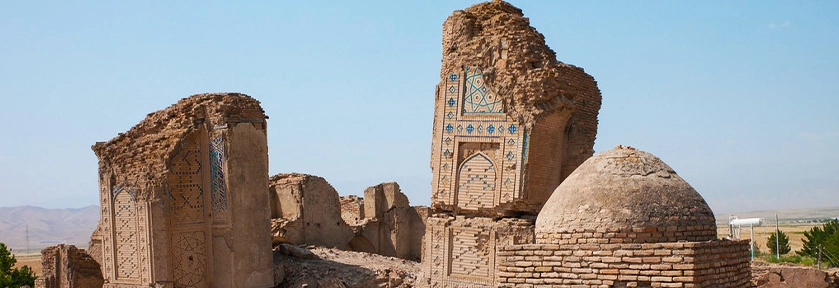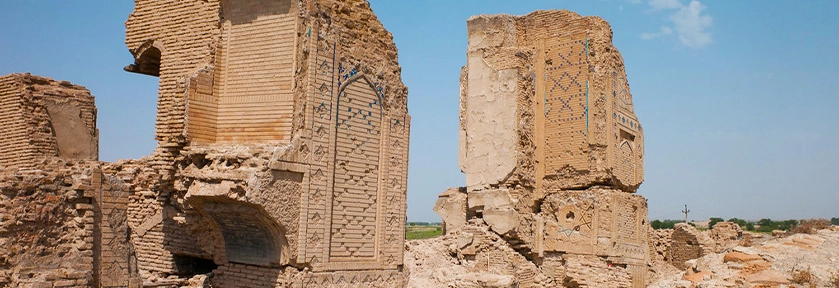The Seyit Jamal ad-Din Mosque was built in the 15th century on a high hill near Ashgabat. It is a unique architectural monument of medieval Khurasan, consisting of a mosque, a tomb, and two domed halls, creating a sacred space.
The Seyit Jemal ad-Din Mosque
The mosque was built in 1456 during the reign of Sultan Abu'l-Qasim Babur Bahadur Khan. Vizier Muhammad Hudaydat was an important patron of the mosque, and his father, Jamal ad-Din, was buried here, emphasizing the importance of the complex for the local community.
Significance of Dragons
The depiction of dragons on the façade of the Seyit Jamal ad-Din Mosque is an intriguing and enigmatic feature that draws the interest of both researchers and tourists. This symbol holds profound historical significance and is linked to the totem of the Turkmen tribe who dwelled in the Anau district during the 15th century.
Many cultures have included ancient dragons in their mythology and culture. The Turkmen tribe viewed dragons as symbols of strength, wisdom, and protection. The dragons on the mosque's facade served as decoration and symbolized the protection of the holy place and its inhabitants.
The dragons on the façade of the mosque are a unique symbol of Central Asian cultural heritage. The Seyit Jamal ad-Din Mosque combines mystical and religious elements, giving it artistic originality and interest.
By the late 19th century, the complex required restoration due to significant cracks in the walls. Only the portal of the mosque has been relatively well-preserved. The complex has a majestic appearance typical of medieval buildings, accentuated by two tall, two-tiered minarets stylistically matching the portal.
In 1948, an earthquake destroyed the Seyit Jamal ad-Din Mosque. However, the mosque's surviving portal remains significant and continues to attract attention. It is a splendid example of the architectural art of that time and is now part of a museum collection.
The Seyit Jamal ad-Din Mosque remains a popular pilgrimage site and tourist attraction, even though it no longer retains its original appearance. The ruins, mosaic fragments, and portal serve as lasting examples of the magnificence and artistry that have endured for centuries.


